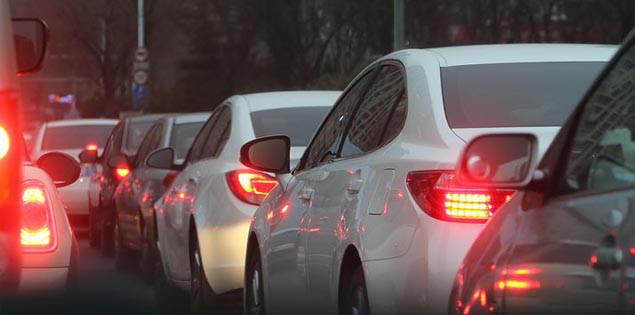
Traffic slows cities to a crawl, inconveniences residents, slows down public transportation and even discourages visitors from coming back to a town.
The latest figures from Texas A&M Transportation Institute show that the average person spends 42 hours each year sitting in traffic, with an average of $960 lost per motorist in wasted fuel and lost time. Those numbers can nearly double in larger metropolitan areas. All in all, Americans on the road wasted 6.9 billion hours sitting in traffic in 2015, for a whopping total of $160 billion disappeared dollars.
There are many reasons why traffic buildup occurs — inadequate roads, accidents, rubbernecking, sheer volume at certain times of day. But did you know that circling while looking for parking is a contributor to the problem?
How much traffic is actually caused by parking problems?
In short, the amount of traffic caused by drivers searching for parking varies greatly, depending on the day and time the estimate was taken and in which metropolitan area the referenced study was conducted. The studies themselves are wide-ranging, too, in a way that makes it difficult to attribute a specific number to the problem — available reports span an 80-year timeframe and have produced results as low as 8 percent or as high as 74 percent.
Donald Shoup, a researcher at the Department of Urban Planning at UCLA, has estimated that 30 to 34 percent of traffic is caused by people circling for parking. However, he notes that the studies cover too broad a timespan and too varied a locale to produce an accurate number. “It may be more,” Shoup told the San Francisco Examiner in 2013, in reference to a study conducted in that city of parking’s effect on traffic. “What’s important is that cruising [for parking] causes some level of traffic, a lot of pollution, and is expensive.”
Even if the estimated percentage of parking’s impact on traffic can fall across this massive span between 8 and 74 percent, circling for parking is one of the only controllable factors that a municipality can try to tackle. Unlike ineffectively-designed streets which cost tens — if not hundreds — of millions to tear out and expand, or accidents and rubbernecking which cannot be predicted, modernizing how motorists find parking is an obtainable goal for municipalities that need to effectively control their traffic problem.
Alleviate traffic by modernizing parking

Many believe that parking problems are due to a shortage of spots, when in reality, many municipalities have adequate space and then some. For those searching, it has more to do with locating what’s already there: people keep driving because they didn’t look hard enough or felt that they had invested too much time to no avail. Luckily, there are parking technology systems which help drivers identify open spaces quickly and easily by:
- Identifying the number of open spots for motorists — It’s not uncommon to see traffic backed up at and around a garage entrance, with cars waiting to enter and attempt to find a spot. On a particularly busy day, it’s not uncommon for those drivers to hop right back out and revert to circling or hovering for an open spot somewhere else. Identifying the number of available spots at the entrance keeps drivers moving and places them in spots faster than circling and searching.
- Sending drivers directly to open spots — Don’t just notify drivers that there are six spots left in the garage. Be explicit — show them where to go. Signage at the entrance updated in real time can deliver level-specific information, and an indicator light can immediately show drivers where the available spots are located.
Modernizing a municipality’s existing parking situation makes navigating the streets an easier and more pleasant experience. By enabling drivers to find spots quickly and easily, a modernized parking facility can keep traffic moving and prevent idling for a spot to open up, which reduces the overall impact looking for parking has on traffic. Although preventing all traffic may not be possible, being able to influence a sizable portion of that volume — whether it makes up 8 percent, 30 percent or 74 percent of a municipality’s traffic issue — can still have significant impact on the visitor’s overall experience.
